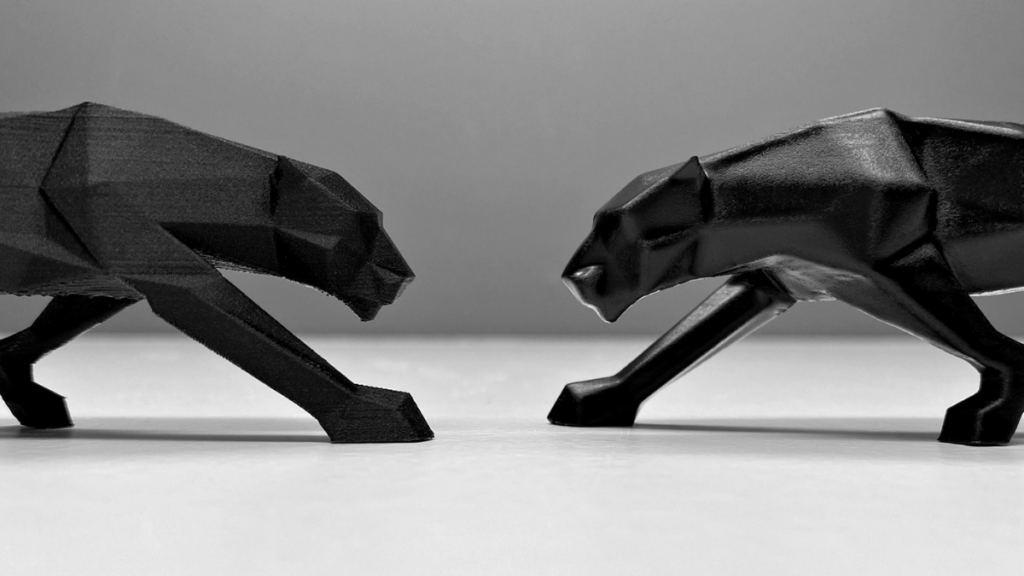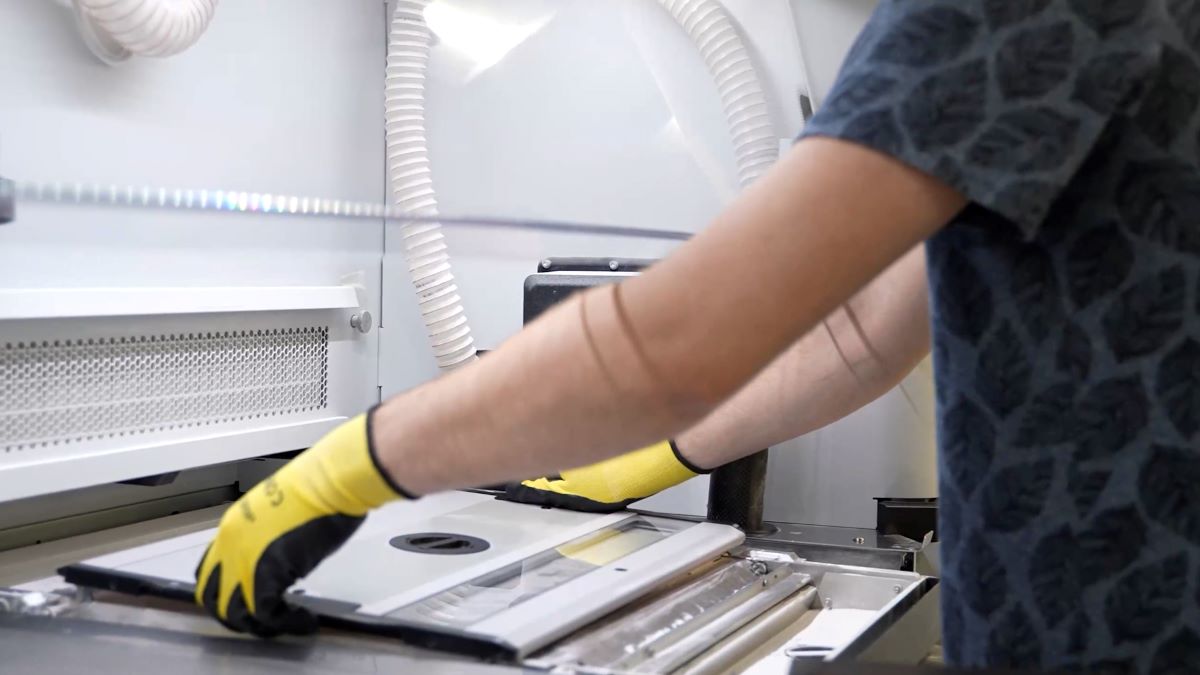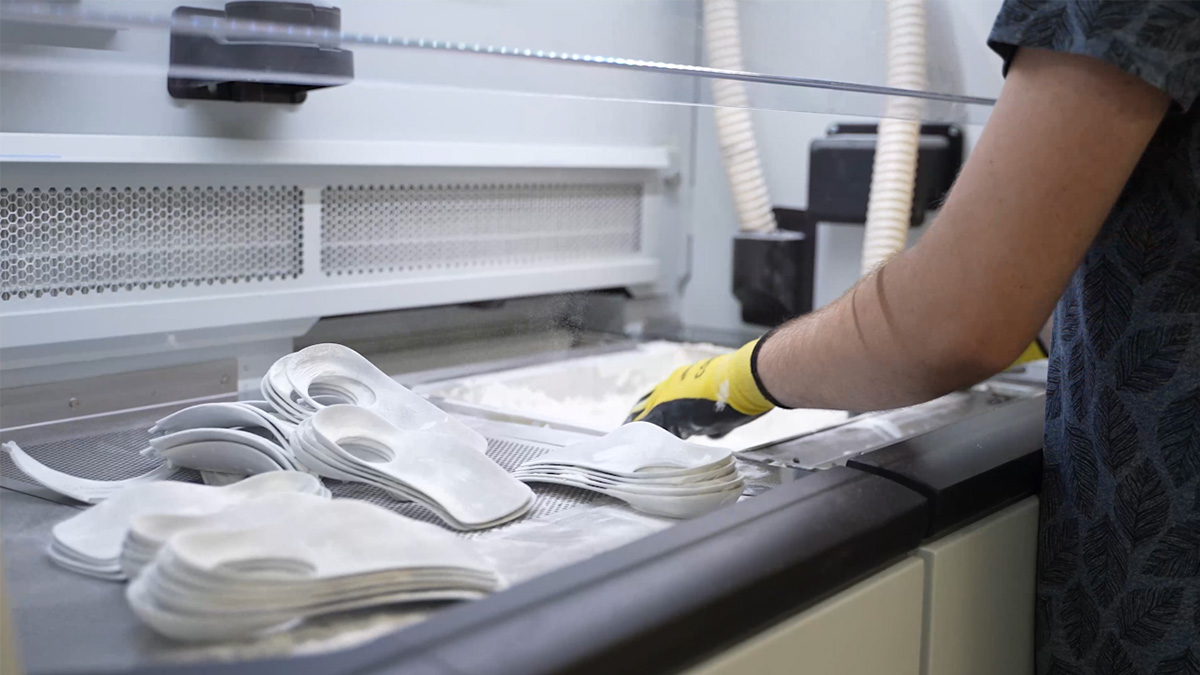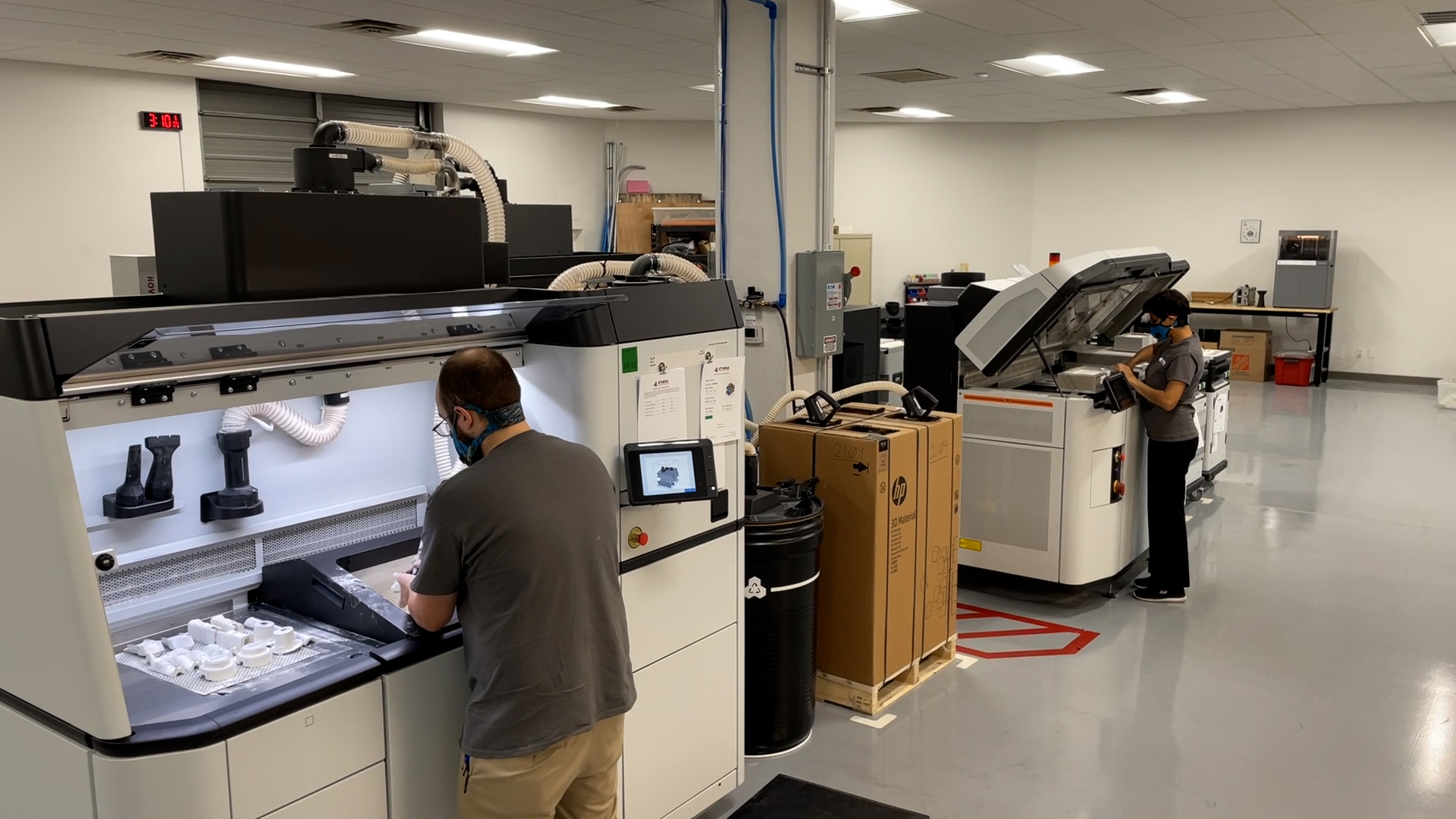Part production has many potential methods, with 3D printing becoming a popular and cost-effective option. What method you use correlates to the part’s use case and the attributes it should embody. As an expert in 3D printing and a provider of outsourced services to manufacturers, we offer a range of 3D printing solutions. When organizations come to us with criteria for a part to be strong, robust, and accurate, we often recommend fused filament fabrication (FFF), also known as fused deposition modeling (FDM).
If these qualities align with your part goals, you’ll want to know what it is, how it works, its benefits, and use cases. You’ll learn all of that and more in this post.
What Is Fused Filament Fabrication (FFF) 3D Printing?
Fused filament fabrication is an additive manufacturing process that uses thermoplastic material to create 3D objects. The core concept of FFF is that it’s an extrusion process. Deposits of melted thermoplastic material build a 3D object layer by layer. The deposit component of the process is why it’s often called fused deposition modeling.
It’s become one of the most widely used 3D printing applications due to its affordability and variety of applications. It’s also a reliable way of making robust parts, making it a great solution for many industries.
How Does Fused Filament Fabrication (FFF) Work?
As with most 3D printing processes, there are three main stages, beginning with creating the CAD file and ending with post-printing details.
Here’s a breakdown of each:
Design Creation and File Preparation
The first stage is to create the design using CAD software to generate the 3D model. In file preparation, slicing is the next step. Slicing takes the CAD file and transforms it into layers. More details are in this phase, including defining configurations for the support and actual material, nozzle size, printing quality, and movement commands.
Printing Process
The second phase is the actual printing, which begins with feeding filament into a large spool via a moving, heated printer extruder head. The print head moves under computer control to define the printed shape from the CAD file.
Typically, the head moves in two dimensions to deposit one horizontal layer of material at a time. Then, vertical movement commences to begin the new layer. The speed of the head is also controllable to stop or start deposition without stringing or dribbling between the sections.
Post-Processing
After printing is complete, the operator removes the support structures. Then comes finishing, which can include:
- Sanding: Smooth out rough surfaces and remove any imperfections.
- Vapor smoothing: Expose the 3D-printed object to a solvent vapor to melt the surface layer for a smooth finish.
- Priming and painting: Apply a priming layer to the surface for better paint adhesion. Painting may also increase durability and may be necessary depending on the end use of the part.
Benefits of Fused Filament Fabrication (FFF) 3D Printing
So, why should you choose to use fused filament fabrication 3D printing? Earlier, you learned that FFF was an ideal method for parts that must be strong, robust, and accurate. Most parts in manufacturing do, but the advantages of FFF go beyond the qualities of the end product.
These are the key benefits of FFF:
- Cost-effective: FFF is the most affordable type of 3D printing. It doesn’t require significant implementation or training.
- User-friendly technology: The industry considers FFF the simplest 3D printing option. The system is logical and easy to understand, and the setup is minimal.
- Variety of filament materials for diverse applications: Another advantage of fused filament fabrication is that you can use many materials. Examples include polylactic acid (PLA), polyethylene terephthalate glycol (PETG), thermoplastic variants, acrylonitrile butadiene styrene (ABS), and nylon. Your choice of material will depend on the use case and how sturdy or flexible it needs to be.
- Rapid prototyping capabilities: FFF is a relatively fast way to print 3D prototypes. You can change the settings to print faster than some other resin printers as well as adjust thickness.
- Large builds are possible: FFF printers are infinitely scalable. If the printer isn’t large enough for a specific part, you can break it into separate parts and assemble it.
- Creating functional parts: The 3D object you print will be strong and have a smooth finish, so it’s ready for use within whatever you produce.
- The level of detail is considerable: Since you can set the thickness of the layers, the object can have precise and fine details if necessary.
Use Cases of Fused Filament Fabrication (FFF) 3D Printing
Fused filament fabrication 3D printing is highly versatile, which means many industries can apply it to their manufacturing workflows. Let’s review some general and industry-specific use cases.
Manufacturing Aids
One unique use case for FFF 3D printing is the creation of manufacturing aids. The development of these parts is necessary to support the manufacturing process. Things like jigs, fixtures, drill guides, locating tools, and gauges are all examples of what you can create with this type of 3D printing.
Product Design
With its low cost and fast printing capabilities, fused filament fabrication is ideal for prototyping and testing. With FFF, you have a 3D visualization of the design. You can then assess its viability and make adjustments. Then, print the next iteration until it meets all your requirements.
The medical industry often employs FFF to prototype scaffolds for medical tissue engineering applications.
Small Batch and Low-Volume Manufacturing
For bespoke parts, FFF can be a time and money saver. You may only need a small number of specific pieces for your overall product. Examples could include things like gauges. With fast production time, you can achieve faster time to market.
Automotive Uses
The automotive field has also succeeded with FFF’s ability to make prototypes quickly and adjust as needed. The versatility of materials and affordability make this a favorite 3D printing option for the industry. It also has the ability to create end-use parts with ABS or PLC.
Aerospace Applications
The strength and high performance of thermoplastics align with aerospace needs. FFF printing also produces large, flat parts. Some examples include:
- Engine parts
- Satellite antennas
- Frames
- Metallic materials
- Heat-resistant components
A3D Manufacturing: Your Partner in FFF 3D Printing
3D printing is an emerging and sustainable way to produce various parts. Expertise in this field isn’t broad because it’s still so new. The team at A3D Manufacturing has been at the forefront of 3D printing for years. Our FFF capabilities are extensive, and we’ve been able to solve manufacturing problems for many different industries.
Outsourcing this work to our team means you’ll have access to our large variety of printers and filaments. We focus on quality control in every stage of the process, ending with highly customizable post-processing and finishing of the FFF prints. The attention to detail of the finished product never wanes.
These are the things that matter when choosing a 3D printing service provider.
Explore FFF 3D Printing with Experts
FFF 3D printing opens up a vast array of opportunities in manufacturing. It’s cost-effective, fast, and adaptable. With our team of experts, you can begin using it to solve challenges and see what’s possible.
Connect with us today to learn more, get a quote, or ask any questions about FFF.




